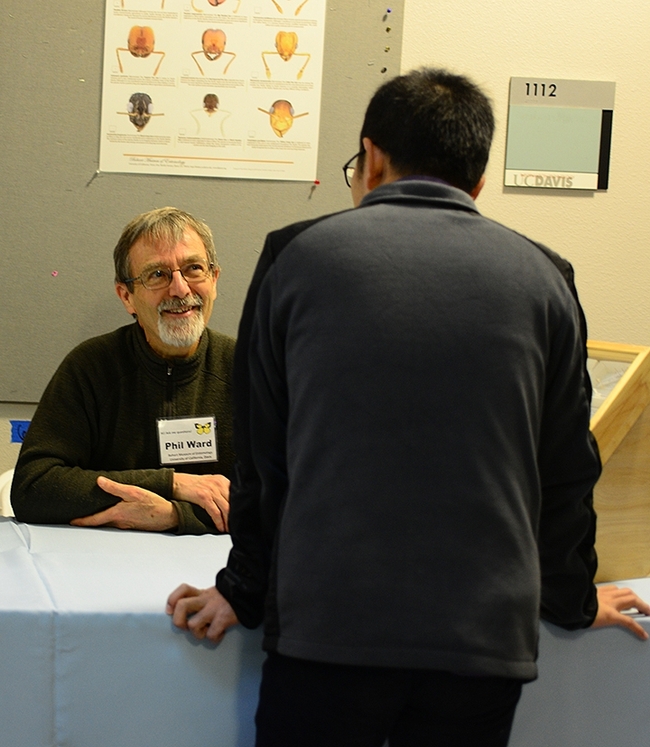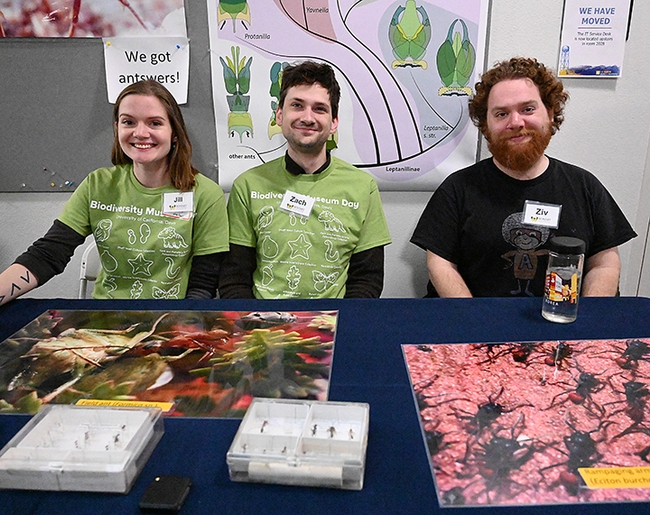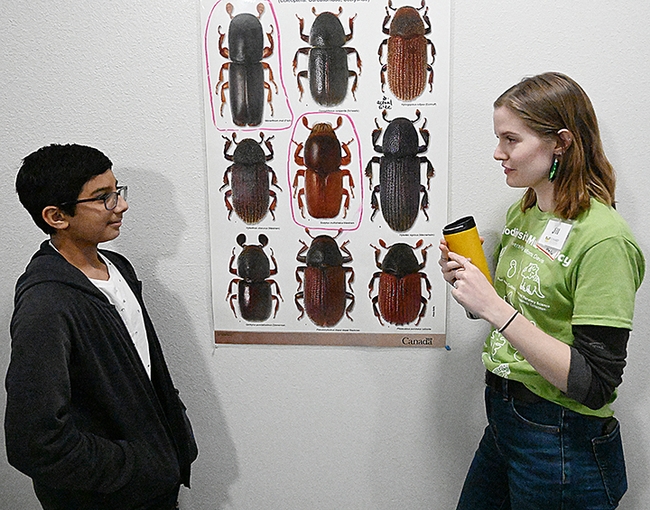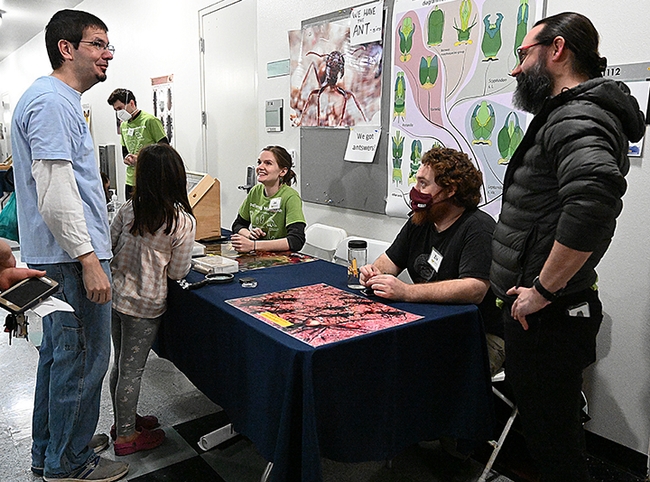
Well, if you were high school student Ziya Akmal, he journeyed--by car--nearly 400 miles from his home in Los Angeles to attend the 12th annual UC Davis Biodiversity Museum Day on Saturday, Feb. 18 on the University of California, Davis, campus.
Biodiversity Museum Day, billed as a Super Science Day, is an annual opportunity to meet the scientists, see their work, and ask questions. It's a great opportunity for students to gain career ideas, said Biodiversity Museum Day chair and co-founder Tabatha Yang, education and outreach coordinator for the Bohart Museum of Entomology.
Akmal said he hopes to enroll in UC Davis, major in entomology, and study ants with Professor Phil Ward, an international authority on ant systematics. Akmal met with the professor in his Briggs Hall office, and talked to three Ward lab members--and one alumnus--at their table in the Academic Surge Building on Crocker Lane.
The Biodiversity Museum Day showcased 11 museums and collections, drawing almost 2000 visitors alone to the Academic Surge Building, where the Bohart Museum of Entomology and the Museum of Wildlife and Fish Biology provided displays. More displays lined the Academic Surge hallway: the Phil Ward lab (ants), the Jason Bond lab (spiders), and the Bohart Museum's separate petting zoos (Madagascar hissing cockroaches and stick insects). Martin Hauser, senior insect biosystematist at the California Department of Food and Agriculture and a regular volunteer at the Biodiversity Museum Day, delighted visitors with a scorpion that he fluoresced.
But across the hall from Hauser were "The Ant People" or "The Myrmecologists" from the Ward lab, who staffed a table and answered questions about not only ants, but a wide variety of arthropods. Doctoral candidates Jill Oberski and Zachary Griebenow and third-year doctoral student Ziv Lieberman were there, as was 2020 alumnus and ant researcher Brendon Boudinot, an Alexander von Humboldt Research Fellow at the Institute of Zoology and Evolutionary Research at Friedrich Schiller University Jena.
Those who listened to Professor Ward deliver a webinar on ants at the 10th annual Biodiversity Museum Day (during COVID-19 pandemic), remembered his presentation (see https://youtu.be/d8eRNsD8dxo.) Ants originated about 120 million years ago (early Cretaceous period), evolving from "wasp-like creatures," Ward said in his webinar. California has some 300 species of ants, but thousands more are in the tropics. Globally, "there may be as many as 40,000 to 50,000 species of ants," but only about 14,000 are described.
Boudinot, Griebenow and Oberski are veterans of UC Davis teams that won national championships in the Entomological Society of America's Entomology Games or "Bug Bowls." The Games, played between university-sponsored student teams, are lively question-and-answer, college bowl-style competitions on entomological facts. To date, UC Davis teams have won four national championships: 2022, 2018, 2016 and 2015.
The UC Davis Biodiversity Museum Day is traditionally held on Presidents' Day weekend. It's free and family friendly.
Attached Images:

Got an ant question? From left are members of the Phil Ward ant lab at UC Davis: doctoral candidates Jill Oberski and Zachary Griebenow, and third-year doctoral student Ziv Lieberman. (Photo by Kathy Keatley Garvey)

UC Davis doctoral student Jill Oberski answers questions from Ziya Akmal of Los Angeles. Akmal made the 400-mile trip to talk to Professor Phil Ward and the Ward lab members at the 12th annual UC Davis Biodiversity Museum Day. (Photo by Kathy Keatley Garvey)

UC Davis doctoral alumnus Brendon Boudinot (foreground), now an Alexander von Humboldt Research Fellow at the Institute of Zoology and Evolutionary Research at Friedrich Schiller University Jena, answers questions at the UC Davis Biodiversity Museum Day. Seated are doctoral candidate Jill Oberski and graduate student Ziv Lieberman of the Phil Ward lab. In back is doctoral candidate Zachary Griebenow. (Photo by Kathy Keatley Garvey)